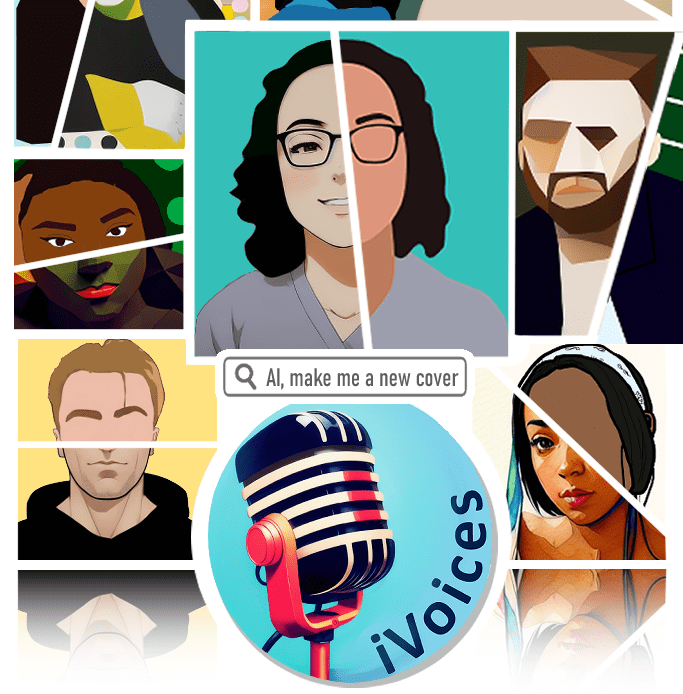Why Your Institution Needs a Digital Publishing Hub
Colleges and universities are under pressure to provide more affordable, engaging, and accessible content for teaching and learning. The knowledge landscape is changing rapidly, and learning materials need to keep up.
Whether it’s adapting existing open educational resources (OER), supporting student-led publishing projects, or developing fit-for-purpose faculty-created materials to enhance learning, institutions are increasingly turning to digital publishing platforms to meet the moment.
To help solve this increased demand, more institutions are investing in a digital publishing hub—a centralized, campus-wide platform that supports the creation, adaptation, and sharing of e-books, learning materials, and other types of digital content.
In this post, we’ll explain what a digital publishing hub is, the needs it can help meet in higher education, and what to look for when choosing digital publishing tools for your institution.
What Is a Digital Publishing Hub?
A digital publishing hub is a centralized platform that enables your campus community—faculty, instructional designers, librarians, students, and administrators—to create, adapt, and publish digital content for a variety of use cases. This can include:
- open educational resources
- zero textbook cost degree pathways
- interactive textbooks
- student publishing
- faculty training materials
- institutional publishing projects (like handbooks, policies, reports and strategic plans)
Unlike learning management systems (LMS) or traditional content repositories, a publishing hub is built for authorship. It combines ease of use with professional publishing capability, including the ability to share published work privately or publicly, and in a variety of formats.
A robust publishing hub supports traditional copyright as well as open licensing and open access. It meets strong accessibility standards for authors using the platform to create content as well as for readers and consumers of published work. It also allows organizations to curate, manage and showcase their published work under their own brand (like a branded catalog).
Digital Publishing and the Knowledge Economy
The way knowledge is created, shared, and consumed in higher education is changing fast. Generative AI, digital collaboration tools, and other technologies are reshaping not only how students learn, but also how educators teach and how institutions contribute to the broader knowledge economy.
Instructors are rethinking traditional assignments. Students are becoming co-creators of content. New ideas and behaviors are emerging faster than traditional publishing models can support.
To keep pace, institutions need infrastructure that allows them to quickly create, adapt, and share learning materials. Cost pressures, equity goals, and a demand for accessible, student-centered content are also driving change. That’s why many institutions are investing in digital publishing hubs—platforms that make it easy to build, update, and share high-quality learning resources at scale.
Here are five major forces accelerating the need for sustainable, scalable digital publishing infrastructure:
1. The Growth of OER and Open Textbooks
Faculty and administrators are embracing open educational resources (OER) as a way to reduce costs, increase access, and tailor materials to local needs. According to Bay View Analytics, 64% of U.S. faculty were aware of OER by 2022–23, and 22% had required an OER in one or more of their courses. In Europe and the UK, despite resourcing challenges, adoption of OER is also growing through library leadership and cross-institutional collaboration.
How digital publishing tools can help:
Creating OER at scale requires more than PDFs or Google Docs. A digital publishing platform allows educators to build professional, accessible open textbooks that are easy to revise, remix, and share in formats like web, PDF, and EPUB. Centralized infrastructure supports collaboration, updates, and institutional branding, making it easier to manage growing OER programs.

2. A Rise in Student Publishing and Open Pedagogy
A growing number of instructors are experimenting with open pedagogy, an instructional approach that invites students to actively contribute to creating knowledge and developing learning materials. This approach promotes agency, deepens engagement, and results in learning materials that reflect student voices and lived experiences.
How digital publishing tools can help:
A digital publishing hub supports projects like this by offering a safe, structured environment for students to co-create and share work, while giving instructors the tools for scaffolding, accessibility, and quality control. These platforms make it easier to iterate, update, and govern learning materials developed collaboratively with students.
By making the process of creating and sharing knowledge more inclusive, a digital publishing hub can help educators shift from traditional, “throw-away” assignments to co-creation activities that represent meaningful learning and lasting contributions.

An example from the Pressbooks community:
At the University of Arizona, Dr. Diana Daly and her students co-created Humans R Social Media, a “living book” on digital culture. Students contributed podcasts, videos, and memes that reflected their own experiences. The project replaced outdated materials with student contributions and became a powerful example of culturally responsive pedagogy. Students described the experience as empowering:
“It made us feel like our opinions and our voices were heard and appreciated for the first time.”
“The opportunity to be published gave me more incentive to make sure my assignments were my best product”
3. The Shift to Interactive Learning Materials
Today’s students expect more than static, text-heavy books. With increased digital fluency and shorter attention spans, learners are looking for multimedia-rich content that’s engaging, responsive, and designed for how they actually consume information online.
As a result, educators are increasingly turning to interactive learning materials—resources built from the ground up for the web. These may include embedded videos, self-check quizzes, drag-and-drop activities, memory games, branching scenarios, audio prompts, and other features that turn passive reading into active learning.
How digital publishing tools can help:
Interactive learning requires platforms that support web-native design. A digital publishing hub allows educators to embed quizzes, videos, and activities directly into course content without needing coding skills. Integration with tools like H5P and learning management systems ensures interoperability, feedback loops, and easier tracking across large cohorts.
An example from the Pressbooks community:
At the University of Virginia, Senior Lecturer Kate Neff developed an interactive Spanish textbook for high-enrollment language courses using Pressbooks and H5P. The book includes over 200 embedded activities that offer low-stakes, scaffolded practice in grammar, vocabulary, and cultural context. With Pressbooks Results, Kate can monitor student performance and intervene early when needed.
Thanks to Canvas integration, updates to content automatically sync across multiple sections, saving instructors time and ensuring consistency. Students praised the experience:
“I really like the practice in the textbook… the diversity keeps me engaged.”
“I appreciate how forgiving the activities are; I can try again until I get it right.”
By combining rich interactivity with scalable tools, Kate’s team has created a flexible, student-centered learning experience that meets the needs of modern learners.
4. Evolving Accessibility Standards
As accessibility standards evolve, higher education institutions face growing expectations to ensure digital materials meet guidelines like WCAG 2.1 AA and are usable with assistive technologies. Students now access course content across a wide range of devices and interfaces—including screen readers, text-to-speech tools, and keyboard navigation—making inclusive design more critical than ever.
How digital publishing tools can help:
To meet these needs, institutions need publishing platforms that embed accessibility into both the reading experience and the creation process. A digital publishing hub enables instructors to build content that’s structured, navigable, and accessible by default—supporting semantic headings, alt text for images, accessible math notation, and more accessible export formats. This ensures materials are usable by all learners while also reducing the burden of retroactive remediation.

An example from the Pressbooks community:
In The Web Content Accessibility Guidelines and Higher Education, a blind grad student and sighted librarian “share lessons from collaborating to improve the accessibility of academic libraries”.
The guide includes sample audio clips and real-time demos that let instructors experience what students using screen readers encounter. By embedding accessibility education into an openly licensed resource, the project not only models best practices, it makes them easy to adopt. Pressbooks’ structured, web-native format ensures the toolkit itself meets accessibility standards while helping educators design more inclusive materials of their own.
5. Facilitating Institutional Knowledge-Sharing
Educational institutions generate a wide range of valuable knowledge, from faculty-authored research to teaching guides and institutional reports. But too often this work lives in disconnected silos, making it hard to access, preserve, or promote.
How digital publishing tools can help:
A digital publishing hub gives institutions a centralized, structured way to curate and share their intellectual output, ranging from scholarly work to institutional policies, handbooks, reports, professional learning, and more. Digital publishing hubs provide tools to manage branding, ownership, publishing permissions, and sharing of knowledge assets.
Institutions can align their publishing practices to optimize operational processes and support strategic goals as knowledge-producing organizations. Publishing under a unified domain strengthens institutional identity and makes it easier for faculty, staff, and students to find, use, and build on shared resources.
Examples from the Pressbooks community:
eCampusOntario’s Action Research Handbook is a practical, openly licensed guide designed to help educators lead classroom-based research projects. Developed in collaboration with faculty across Ontario colleges and universities, the handbook provides a model for collaborative publishing that reflects sector-wide expertise. By using Pressbooks, the project team created a resource that is easy to navigate, accessible, and continuously updatable—ensuring that institutional knowledge is preserved and shared across programs, institutions, and time.
To see the breadth of content that institutions and consortia are publishing through their digital content hubs—ranging from open textbooks and student-authored works to research monographs and institutional reports—explore examples from:
Open Oregon
Boise State
Iowa State
Open Education Alberta
Campus Manitoba
How Pressbooks Can Help
Pressbooks is the trusted digital publishing platform for hundreds of colleges and universities around the world. It provides institutions with a flexible, easy-to-use publishing hub that supports a variety of institutional publishing use cases.
If you’re exploring options for a digital publishing hub on your campus, we’d love to show you what’s possible with Pressbooks.
